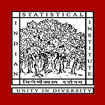Proterozoic tectonics and trans-Indian mobile belts: A status report
Document Type
Conference Article
Publication Title
Proceedings of the Indian National Science Academy
Abstract
The Archean cratonic nuclei in India are hemmed by Proterozoic mobile belts or fold belts. These mobile belts reveal the tectonic processes that shaped the then craton margin magmatism, sedimentation, metamorphism and deformation of crustal segments, and suturing of the cratonic blocks embedded within the peninsular Indian shield that remained more or less stable since the Cambrian. A loose spatial connection of the Eastern Ghats belt (EGB) along southeastern margin of India, through Chotanagpur granite gneiss terrain and adjoining North Singhbhum fold belt in eastern India, Central Indian tectonic zone, to Aravalli-Delhi mobile belt in northwestern India constitute the trans-Indian mobile belts with tectonic episodes apparently linked to assembly and dispersal of two major supercontinents in the Proterozoic. Beyond southern extremity of the EGB (Ongole domain), the Nellore schist belt and tectonically juxtaposed Nallamalai fold belt in southern India abuts further south against the Southern granulite terrain (SGT) with remnants of Neoarchean inheritance and Neoproterozic remobilization. SGT is a key element in unravelling trans-continental connections of India during the late Neoproterozoic marked by assembly of the Gondwana supercontinent. Despite the apparent first order connection of these belts developed under largely similar global tectonic framework, individual mobile belts show diverse rock association, metamorphic grade and geologic antiquity. In this status report we briefly review these Indian Proterozoic mobile belts and associated fold belts in the light of recently published work bearing on tectonomagmatic, structural, metamorphic and geochronological data and interpretation.
First Page
445
Last Page
460
DOI
10.16943/ptinsa/2016/48460
Publication Date
7-1-2016
Recommended Citation
Saha, Dilip; Bhowmik, Santanu Kumar; Bose, Sankar; and Sajeev, Krishnan, "Proterozoic tectonics and trans-Indian mobile belts: A status report" (2016). Conference Articles. 780.
https://digitalcommons.isical.ac.in/conf-articles/780


Comments
Open Access; Bronze Open Access